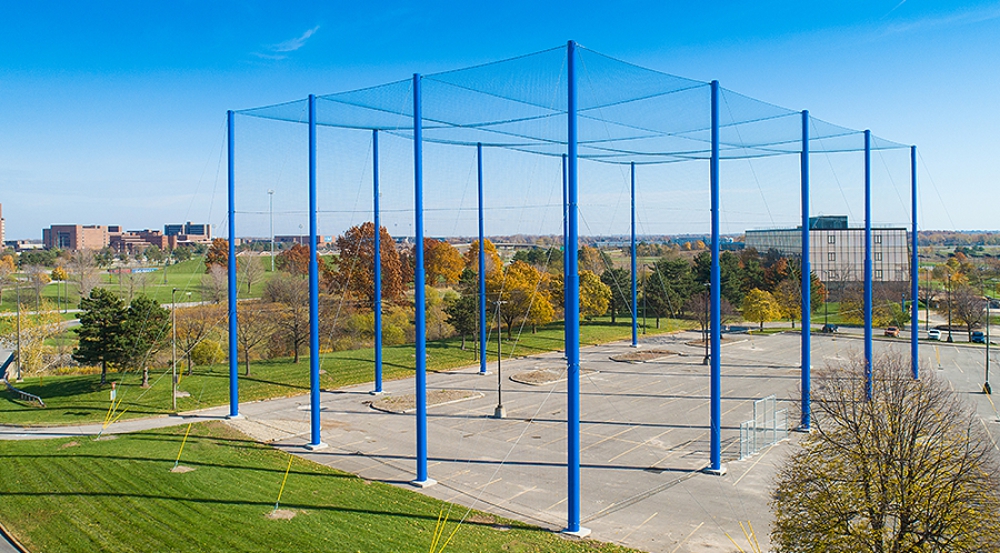The royal blue poles stand upright, like birthday candles on a cake.They support a massive enclosed netted complex where University at Buffalo professors, students and partners will conduct experiments on unmanned aerial vehicles.
The 24,000-square-foot research facility, dubbed SOAR (Structure for Outdoor Autonomy Research) is located on the university’s North Campus, adjacent to Crofts Hall. It will help solidify UB’s position at the forefront of research and education in a technology that could improve everything from commerce and national security to emergency response and agriculture.
“The University at Buffalo is committed to addressing society’s most challenging issues. By creating a research complex dedicated to exploring the tremendous potential of unmanned aerial vehicles, UB researchers, students and our partners will advance cutting-edge solutions that can help global food security challenges, disaster response, and anti-terrorism,”
says Kemper Lewis, PhD, dean of UB’s School of Engineering and Applied Sciences.
The facility is 120 feet by 200 feet, which is slightly more than half an acre, and 86 feet tall. In terms of cubic feet, it is believed to be the third-largest outdoor, enclosed drone-testing facility in the nation.
Because it is enclosed, and thus considered an indoor flight facility, researchers will not be subject to Federal Aviation Administration rules when testing UAVs. Researchers will use the facility to conduct research on:
- Autonomous technology – This involves UAVs, as well self-driving vehicles, which the university tests in the area outside the complex.
- Sensors and surveillance – This field has applications in agriculture, military, homeland security, law enforcement, wildfire monitoring, bridge and building inspections, and other areas.
- Small parcel delivery and logistics – This include studying using drones to deliver goods.
- Drone fleets – Researchers at UB are exploring how drones can work together in emergency situations.
The facility will also be a resource for undergraduate and graduate students who study robotics and computer vision. Additionally, it’ll benefit Western New York companies interested in using the complex to test UAV hardware.
“Our plan is to leave the netting up year-round,” says Chase Murray, PhD, assistant professor of industrial and systems engineering in the School of Engineering and Applied Sciences. “This will enable us to conduct tests and improve the performance of UAVs in the often-harsh winter weather conditions that we encounter.”
Murray, who studies UAV routing and logistics, among other things, secured a $393,000 grant from the Office of Naval Research’s Defense University Research Instrumentation Program to support the facility’s construction.
Source: Press Release

